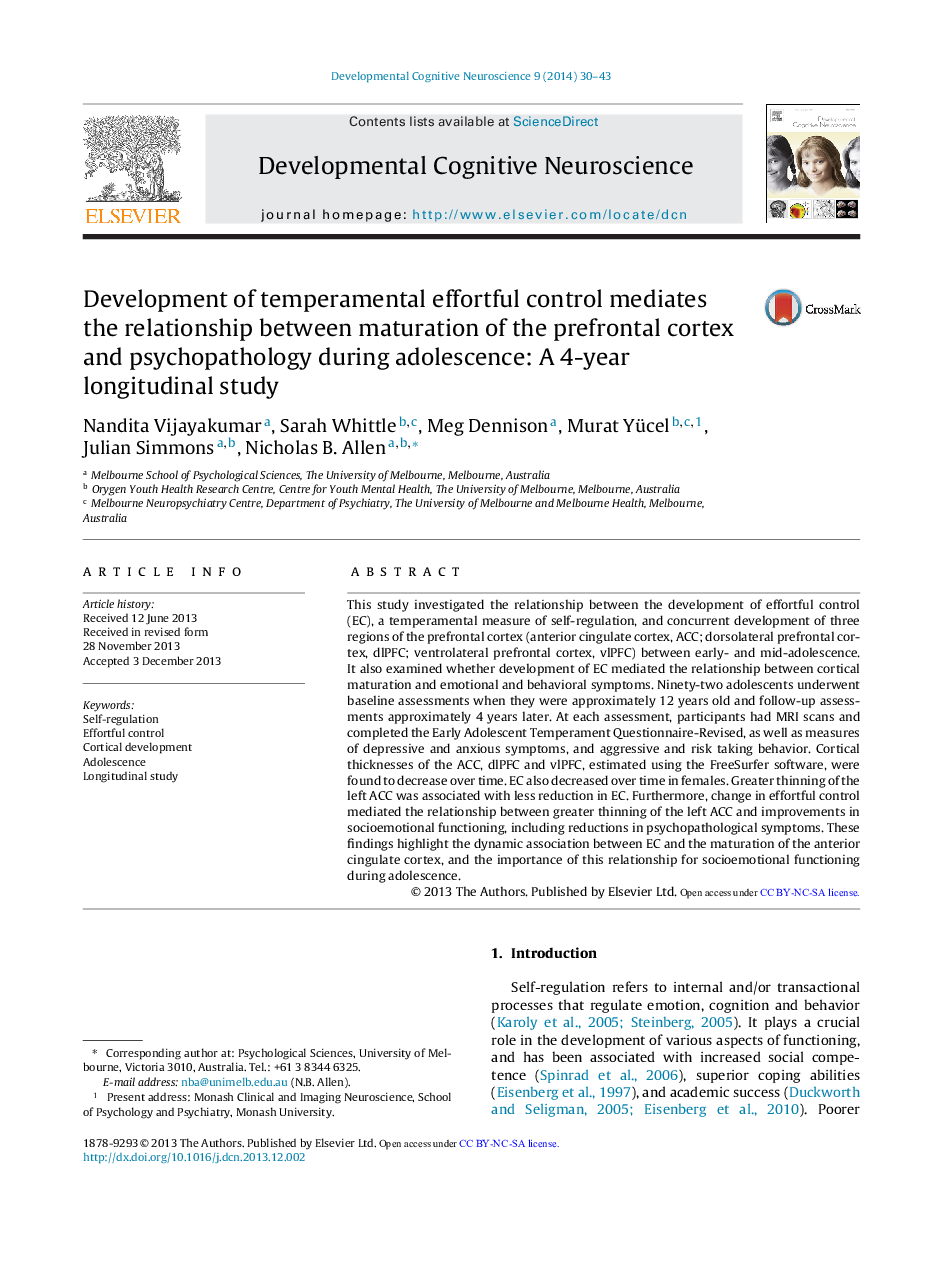| Article ID | Journal | Published Year | Pages | File Type |
|---|---|---|---|---|
| 4316628 | Developmental Cognitive Neuroscience | 2014 | 14 Pages |
•Longitudinal study investigating the relationship between development of cortical thickness and effortful control during adolescence.•Examined whether change in effortful control mediated the relationship between cortical development and change in socioemotional functioning, including psychopathology symptoms.•Greater cortical thinning of the left ACC was associated with superior development of effortful control.•Changes in effortful control mediated the relationship between greater thinning of the left ACC and improvements in socioemotional functioning.
This study investigated the relationship between the development of effortful control (EC), a temperamental measure of self-regulation, and concurrent development of three regions of the prefrontal cortex (anterior cingulate cortex, ACC; dorsolateral prefrontal cortex, dlPFC; ventrolateral prefrontal cortex, vlPFC) between early- and mid-adolescence. It also examined whether development of EC mediated the relationship between cortical maturation and emotional and behavioral symptoms. Ninety-two adolescents underwent baseline assessments when they were approximately 12 years old and follow-up assessments approximately 4 years later. At each assessment, participants had MRI scans and completed the Early Adolescent Temperament Questionnaire-Revised, as well as measures of depressive and anxious symptoms, and aggressive and risk taking behavior. Cortical thicknesses of the ACC, dlPFC and vlPFC, estimated using the FreeSurfer software, were found to decrease over time. EC also decreased over time in females. Greater thinning of the left ACC was associated with less reduction in EC. Furthermore, change in effortful control mediated the relationship between greater thinning of the left ACC and improvements in socioemotional functioning, including reductions in psychopathological symptoms. These findings highlight the dynamic association between EC and the maturation of the anterior cingulate cortex, and the importance of this relationship for socioemotional functioning during adolescence.
